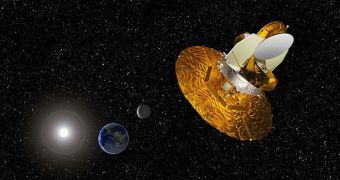A group of physicists from the US Department of Energy's (DOE) Fermi National Accelerator Laboratory (Fermilab) announces a new discovery, that may shed some light on why normal matter was allowed to prevail in its fight against annihilation with antimatter.
According to the Big Bang theory, the most comprehensive account we have on how the Universe began, equal amounts of matter and antimatter should have been produced during this event.
These should have annihilated each other, and leave nothing but energy behind. The trouble with the theory is that this did not happen, as evidenced by the fact that 4 percent of the Cosmos is made of normal, baryonic matter.
For years, physicists have been making efforts to understand what happened during the earliest times in the Universe when normal matter somehow prevailed over antimatter. In recent times, scientists began making considerable strides in this field.
Now, experts with the Fermilab MINOS experiment gain a deeper understanding of the transformation of muon neutrinos into electron neutrinos, a phenomenon that may ultimately help shed more light on what happened during the Big Bang.
Thus far, the role that elementary particles called neutrinos played in the development of the Cosmos has been largely overlooked. About two weeks ago, the Japanese T2K experiment released measurements that indicated neutrinos as important factors, and the MINOS study just confirmed them.
According to researchers, the transformation of muon neutrinos into electron neutrinos could be the main reason why more normal matter was produced in the early Universe. The change was observed with the main injector Neutrino Oscillation Search (MINOS) experiment.
If muon neutrinos did not transform into electron neutrinos, then physicists should have detected 49 electron neutrino-like events. During the investigation, they saw 62 such events, a measurement which indicates that the transformation actually exists.
Theoretical results from the T2K experiment proposed a total of 71 detection events. The difference between the two results can be accounted by the fact that T2K and MINOS used different methods and analysis techniques for conducting their respective invesgations.
“MINOS is expected to be more sensitive to the transformation with the amount of data that both experiments have,” Fermilab physicist and MINOS experiment co-spokesman Robert Plunkett says.
“It seems that nature has chosen a value for sin^2 2 theta-13 that likely is in the lower part of the T2K allowed range. More work and more data are really needed to confirm both these measurements,” he concludes, quoted by Daily Galaxy.

 14 DAY TRIAL //
14 DAY TRIAL //